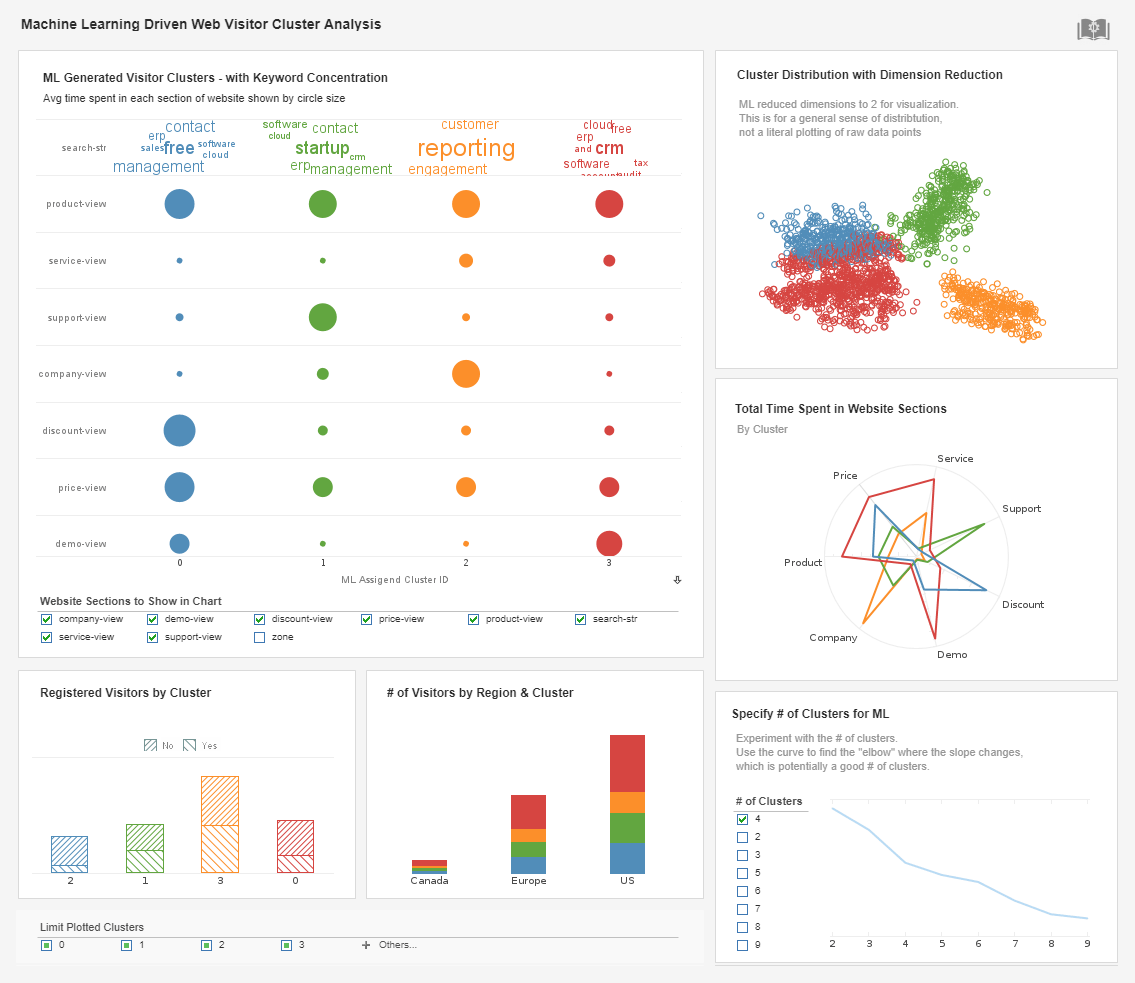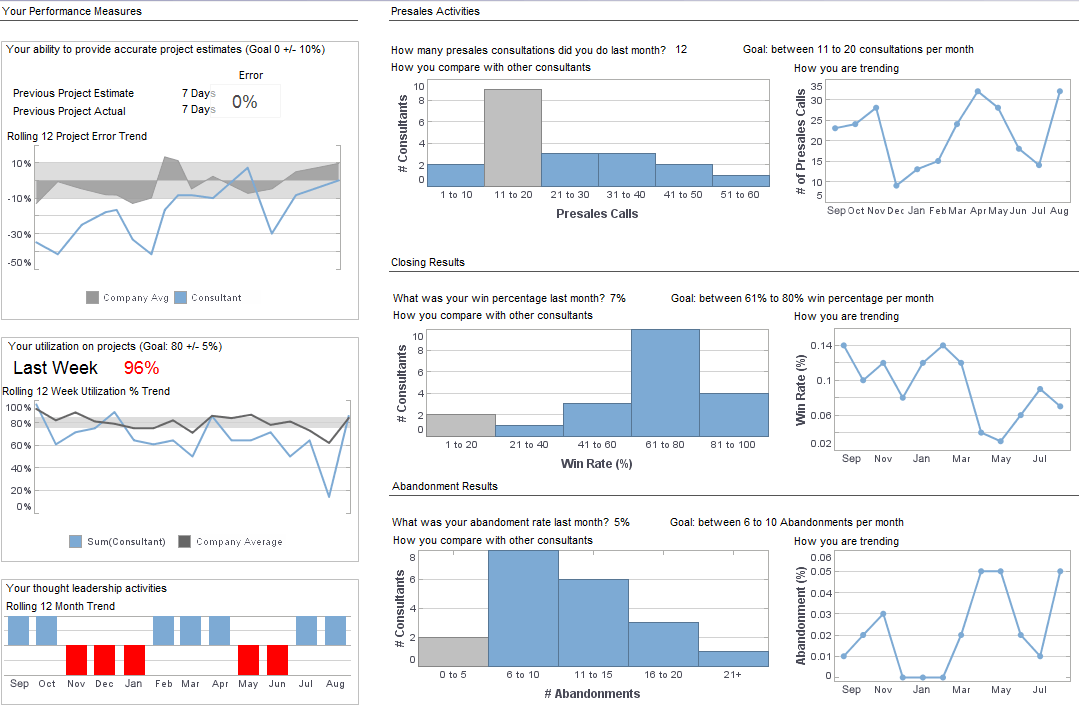Searching for an Executive Dashboard Solution for an Oracle DB?
Are you looking for the best tool to connect to and access Oracle data sources and create executive dashboards? InetSoft has engineered a high-performance, interactive, and easy-to-use BI dashboard and reporting tools that offers flexible features which can be configured for various data sources.
When using business intelligence software to analyze data, it is vital that the software can gain access to whatever database the company is currently working with, whether it be Oracle or something else.
Using powerful patent pending Data Block technology to perform real-time data mashup, InetSoft's Style Intelligence can be used to build high-performance, analytical dashboards that will lead an organization to successfully meet its business goals.
InetSoft's intuitive virtual data model presents many opportunities for business growth. With the unique features of the enterprise data mashup platform, business users, executives, and clients can receive real-time and scheduled data updates, as well as perform highly interactive querying and filtering processes for data analysis.

Mashup Oracle Data with Others
Our efficient data source connectors allow for incremental updates and source optimized querying from Excel worksheets, SAP, Google Analytics, Salesforce, or a large variety of other applications.
StyleBI offers Java Database Connectivity to relational databases, as well as custom connectivity to operational databases, data warehouses, and enterprise applications. For a full list of supported data sources, click here.
With StyleBI, users have the ability to track real-time business performance metrics with interactive dashboards and reports.Our pixel perfect reporting engine presents service-level reports that can be analyzed to discover new and progressive trends within the company.
Reasons to Switch from Oracle BI to StyleBI
1. Faster, more flexible data mashups (less warehouse dependency). StyleBI is built around an enterprise data mashup model that lets you pull from diverse sources on the fly — spreadsheets, APIs, EDI/manifest files, and live databases — without forcing every source into a centralized star-schema first. For teams that need rapid experimentation, customer-facing embedded analytics, or ad hoc combinations of operational feeds, that schema-less mashup approach shortens the path from data to insight and reduces heavy ETL rework.
2. Lightweight, serverless / microservice architecture and faster deployment. StyleBI emphasizes a lightweight, microservices-friendly deployment model that’s easier to run in modern cloud environments and to embed in applications. That can translate to lower infrastructure overhead, simpler scaling (spin up more BI service instances rather than big persistent clusters), and faster time-to-value compared with traditional monolithic Oracle BI stacks that often require substantial admin and on-premise warehousing. If you want an analytics layer that behaves like a cloud-native service and integrates into CI/CD and container platforms, that architecture is a major operational win.
3. Easier to use and administer — lower TCO for many organizations. Multiple comparisons and user reviews highlight StyleBI’s strengths in ease of setup, administration, and support responsiveness — factors that reduce the total cost of ownership for small-to-medium teams or organizations looking to decentralize analytics. For companies that found Oracle’s tooling heavy-weight, expensive to manage, or slow to iterate with, StyleBI commonly offers a simpler administrative model and more approachable self-service for business users. That said, feature parity (advanced analytics, enterprise governance, or very large-scale OLAP use cases) should be evaluated case-by-case.
4. Strong fit for embedded and multi-tenant scenarios. If your goal is to embed dashboards inside customer portals, create isolated tenants for multiple clients, or deliver BI as a white-label microservice, StyleBI’s multi-tenancy and embedding capabilities are designed for that use-case and can simplify licensing and deployment models compared with Oracle’s enterprise offerings. This makes StyleBI attractive to SaaS vendors, ISVs, and teams that need per-customer separation without a complex Oracle ecosystem migration.
Migration considerations (opinionated)
- Run a feature-gap analysis: Oracle has deep enterprise features (OLAP, advanced security/enterprise integration, generative AI features in Oracle Cloud) — verify the specific capabilities you can’t live without before switching.
- Plan data reconciliation: if you currently rely on a rich cube/warehouse model, decide whether to keep the warehouse for historical analytics or to reimplement some logic as mashups in StyleBI.
- Proof-of-value: deploy a small pilot (embedded dashboard or a few critical reports) to measure admin overhead, performance, and end-user satisfaction — vendors differ in real-world support and SLAs.
Bottom line (opinion): move to StyleBI if you want a modern, cloud-friendly, easier-to-manage BI layer that accelerates mashups and embedded analytics while reducing admin burden. Stick with Oracle if your organization relies heavily on its mature enterprise capabilities, deep OLAP investments, or existing Oracle-centric platform commitments.


